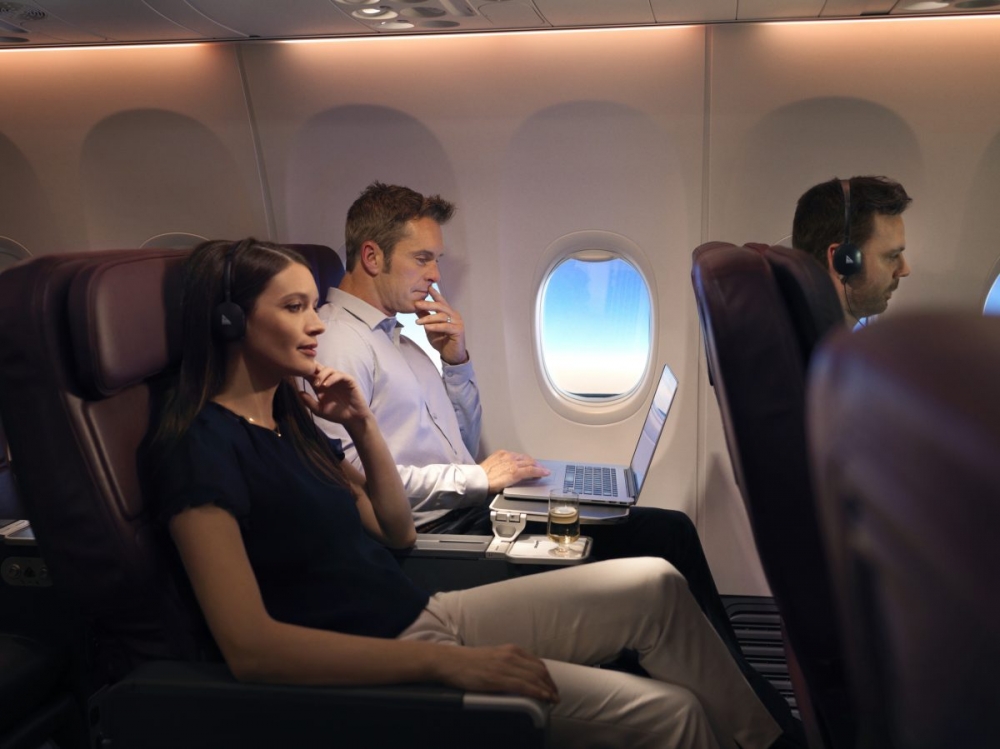Qantas wi-fi takes to the air.
06 April, 2017
4 min read
By joining our newsletter, you agree to our Privacy Policy


Qantas customers will be able to take part in a domestic beta-test of the airline’s high-speed inflight wi-fi from today if they fly on a specially-equipped Boeing 737-800.
The delayed launch comes after months of testing the system with global broadband services provider ViaSat and the Sky Muster satellite service belonging the Australia’s government-sponsored national broadband network (nbn).
The airline, which is also in talks with suppliers to develop an internet product for its international fleet, estimates up to 15,000 customers per month will experience the Wi-Fi service during the initial test. This is expected to rise to 15 million annually once the system rolls out.
The system uses the newer Ka-band technology to deliver speeds that allow customers to use streaming services such as Stan, Netflix, Foxtel and Spotify.
Qantas had touted download speeds of between 7 megabits per second and 12 Mbps during its testing. Results posted by journalists on a demonstration flight on Friday ere in some cases slower, but still enough to watch streaming video, and in other cases much faster. One tester recorded download speeds of more 30Mbps.
Qantas will use the 737 flights to fine-tune the system until mid-year when the technology will be installed on the airline’s domestic fleet of Airbus A330 and Boeing 737 aircraft. The roll-out to some 80 aircraft is due to be completed at the end of 2018.
The service will be complimentary and is expected to see heavy use by business travellers on the Melbourne-Sydney- Brisbane “golden triangle’’.
“Inflight Wi-Fi has been on our wish list for quite a while, but the sheer size of Australia meant it was hard to offer a service that was fast and reliable,’’ Qantas chief executive Alan Joyce said. “The nbn has made it possible and we’re really pleased to be able to tap into this service.''
“The technology we’re using on board this 737 is a generation ahead of what most airlines around the world have and there’s a fair amount of complexity involved. That’s why we’ve installed it on one aircraft for the first few months until we’ve finished fine tuning and are ready to roll out to the rest of the domestic fleet.’’
Virgin Australia has also announced plans to roll-out in-flight wi-fi with customer testing due to begin this month. Virgin is using connectivity company Gogo through Optus satellites on domestic and New Zealand services.
The Qantas rival said the three-month testing period will be used to test the customer response to the GoGo’s 2Ku technology on which passengers will also be able to use streaming services such as Netflix, Pandora and Stan. The service would then be rolled out across its Boeing 737-800, Airbus A330 and Boeing 77 aircraft.
Virgin has yet to reveal its business model for in-flight wi-fi and whether it will charge for the service. However, it has reportedly been surveying passengers to see how much they would be willing to pay.
But Joyce said Qantas was in a strong position with no other no other domestic airline offering passengers next-generation Wi-Fi with a commitment it would continue to be included in the price of the fare.
He also noted the technology also opened the door to efficiency benefits through better flight planning and real-time itinerary management.
Pilots would be able to access detailed live weather, which would help them steer clear of turbulence as well as making better use of tailwinds to reduce flying time, while cabin crew would have new options better manage customers’ onward journeys while still in the air.
Customer research commissioned by Qantas recently showed the most popular uses for Wi-Fi on domestic flights would be a mix of emails (52 per cent of all respondents), general internet browsing (46 per cent, streaming music/TV/movies (31 per cent), social media (30 per cent and news (30 per cent).
Next Article
3 min read
Virgin gets nod for Tiger deal

Get the latest news and updates straight to your inbox
No spam, no hassle, no fuss, just airline news direct to you.
By joining our newsletter, you agree to our Privacy Policy
Find us on social media
Comments
No comments yet, be the first to write one.
